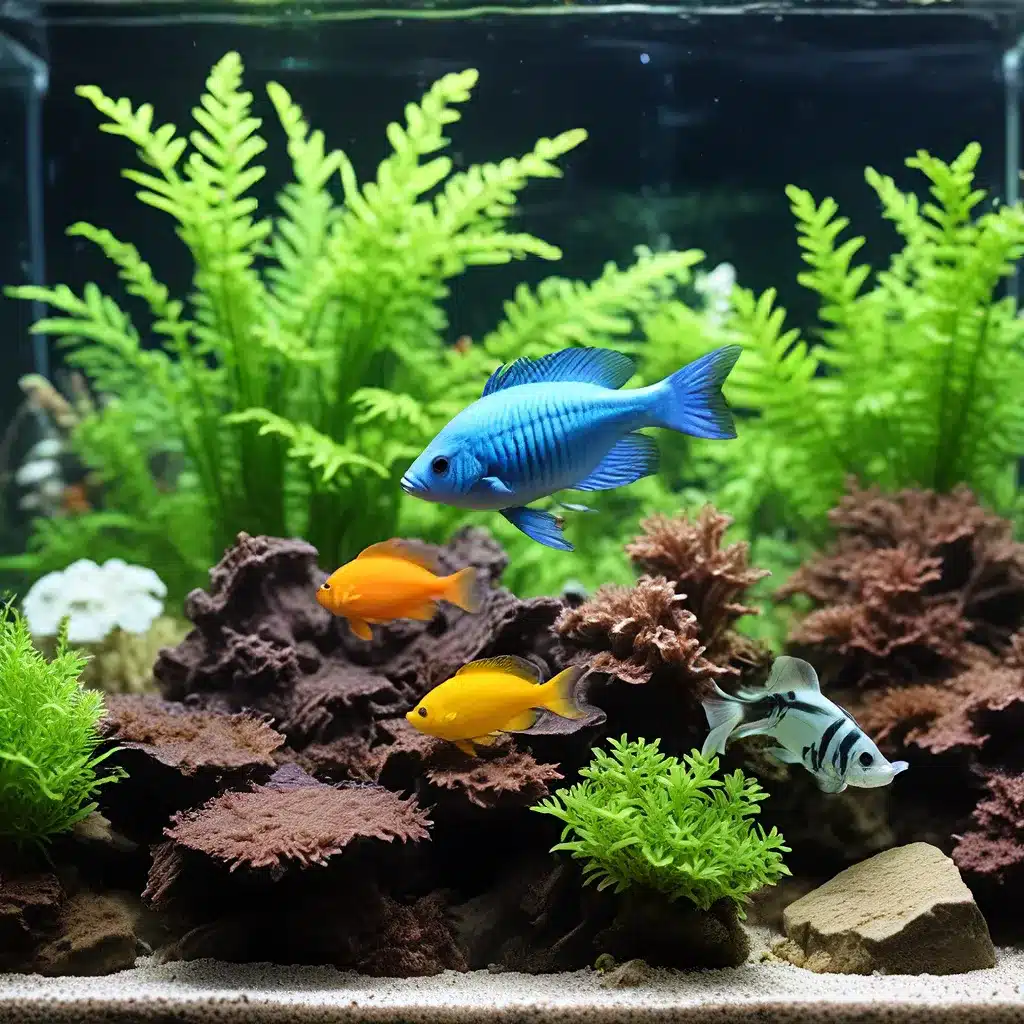
Establishing a Sustainable Aquarium Ecosystem
Maintaining a vibrant and thriving aquarium is a true art form that requires a delicate balance of various factors. As aquarium enthusiasts, we strive to create stunning underwater landscapes that not only showcase the beauty of aquatic life but also provide a healthy, stable environment for our finned companions. In this comprehensive guide, we’ll dive into the essential elements of efficient aquarium maintenance, empowering you to master the art of aquarium care and achieve exceptional results.
Understanding the Importance of Water Changes
At the heart of successful aquarium maintenance lies the routine water change. This seemingly simple task plays a crucial role in maintaining water quality, supporting the overall health of your aquarium inhabitants, and ensuring the longevity of your aquatic ecosystem. Regular water changes help to remove accumulated waste, replenish essential minerals, and keep nitrate levels in check, all of which contribute to the well-being of your aquatic life.
When performing water changes, it’s important to pay attention to the specific needs of your aquarium and its inhabitants. Factors such as tank size, stocking density, and filtration efficiency will determine the frequency and volume of the water changes required. As a general guideline, a 20-30% water change on a weekly basis is a good starting point for most freshwater aquariums. However, some tank setups may require more frequent or larger water changes to maintain optimal water parameters.
Mastering the Art of Water Changes
Executing a successful water change is a skill that can be honed over time. Begin by gathering all the necessary supplies, including clean buckets or containers, a gravel vacuum or siphon, a water conditioner, and an algae scraper or sponge. Carefully siphon out the designated amount of water, taking care not to disturb the substrate or stress the inhabitants.
When replacing the water, ensure that the new water is properly treated with a high-quality water conditioner to remove any harmful chlorine or other contaminants. Aim to closely match the temperature and pH of the existing aquarium water to avoid sudden fluctuations that could shock the fish. Gradually add the new water to the tank, allowing it to gently mix with the existing water to create a smooth transition.
Once the water change is complete, restart the aquarium equipment and monitor the inhabitants for any signs of stress or distress. Regular water changes not only improve water quality but also help to maintain the aesthetic appeal of your aquarium, keeping it looking clean and vibrant.
Optimizing Filtration and Water Parameters
Alongside water changes, proper filtration is a crucial component of efficient aquarium maintenance. Investing in a reliable and well-designed filtration system can significantly enhance water quality and reduce the frequency of water changes. Depending on the size and stocking level of your aquarium, you may consider utilizing a combination of mechanical, biological, and chemical filtration to effectively remove waste, neutralize toxins, and maintain optimal water parameters.
Regularly cleaning and maintaining the filter media is essential to ensure its continued efficiency. Neglecting filter maintenance can lead to a buildup of debris and the accumulation of harmful nitrates, ultimately compromising the overall health of your aquarium.
In addition to water changes and filtration, monitoring and maintaining stable water parameters, such as pH, temperature, and dissolved oxygen levels, is paramount. Fluctuations in these parameters can stress fish and hinder the growth of aquatic plants, so it’s crucial to understand the specific requirements of your aquarium inhabitants and create a stable, balanced environment.
Incorporating Aquascaping Techniques
Beyond the technical aspects of aquarium maintenance, the art of aquascaping can elevate the overall aesthetic appeal and natural harmony of your underwater ecosystem. Carefully designing the layout, incorporating natural elements like rocks, driftwood, and live plants, can transform your aquarium into a captivating, miniature underwater oasis.
Aquascaping techniques, such as the use of the golden ratio, the strategic placement of focal points, and the creation of depth and visual interest, can create a sense of balance and tranquility in your aquarium. Experimenting with different plant species, textures, and growth patterns can also contribute to the overall aesthetic and provide natural filtration and oxygenation for your aquatic inhabitants.
Embracing a Holistic Approach
Ultimately, successful aquarium maintenance requires a holistic approach that encompasses water management, filtration optimization, and the artistry of aquascaping. By understanding the interconnected nature of these elements, you can create a thriving, sustainable aquarium ecosystem that not only captivates the eye but also provides a nurturing environment for your aquatic companions.
Remember, the journey of aquarium maintenance is an ongoing process of learning, experimentation, and adaptation. Be patient, observe your aquarium closely, and make adjustments as needed. With dedication and a willingness to learn, you can master the art of aquarium care and enjoy the immense satisfaction of a healthy, vibrant underwater world right in your own home.
So, roll up your sleeves, dive into the details, and embark on the rewarding adventure of aquarium maintenance. Your aquatic haven awaits!

